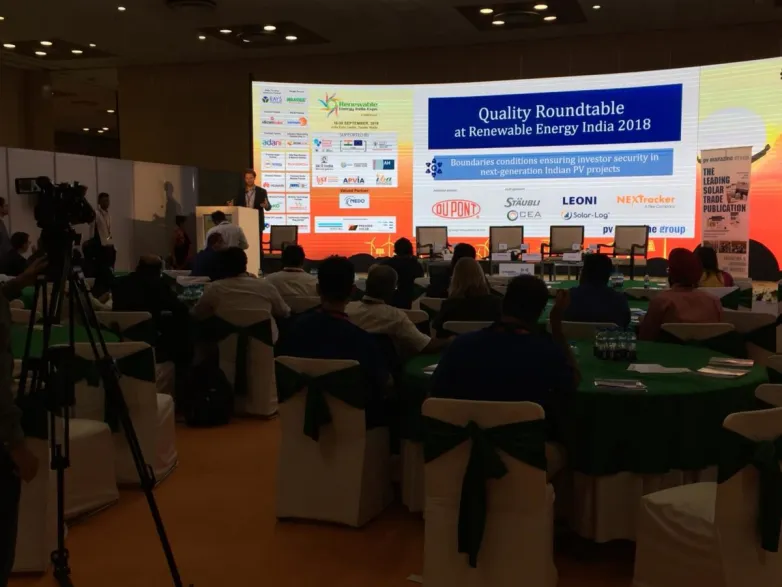Have your say on NSEFI best practice guidelines for utility scale PV
Sep 10, 2019 09:08 PM ET
- The National Solar Energy Federation of India (NSEFI) is continuing to step up its efforts to ensure the quality of large scale solar projects. The body is now looking for stakeholder input into its new best practice guidelines for PV power plant projects, as a part of its ongoing Quality Taskforce initiative.

Positive signs abound that quality issues facing Indian PV power plant developers are being overcome. However, with intense price pressure there is always the risk that corners are being cut in component and installation quality.
The risks of poor quality installations are great, in that they can leave investors stranded and also damage the reputation of the solar sector in general – and the important role PV stands to play in India’s energy future.
NSEFI is seeking to address this, in a collaborative and ongoing project it is executing in partnership with SolarPower Europe. As it approaches the date for finalization of its asset management best practice guidelines, NSEFI’s Quality Taskforce is now addressing PV power plant project planning, design, execution and grid connection.
“The first part done,” explains NSEFI CEO Subrahmanyam Pulipaka, “we have identified our reference points from the SPE [SolarPower Europe] report. We then will identify the areas in the Indian context that need to be addressed, and will then move into the consultation period regarding our members.”
As a part of consultative process, NSEFI CEO Pulipaka is joining pv magazine at this year’s Quality Roundtable event, as a part of the Renewable Energy India Expo. Pulipaka is the co-moderator of the session, and assembled stakeholders from across the solar supply chain will discuss best practice in PV power plant development – from the ground up.
Additionally, Pulipaka will present the progress NSEFI has made with its asset management best practice guidelines. These guidelines address technical asset management, plant O&M, repowering of projects, data management and monitoring, and O&M for microgrids.
“We want to establish the guidelines for complaints, warranty management and insurance claims,” says Pulipaka. “When it comes to the operation, we have analysis, forecasting, core complaints and we even have power plant security – the best ways to secure your asset on the ground.” The NSEFI asset management guidelines are expected to be finalized in the coming months.
Quality on the up
The NSEFI CEO reports that there has been “remarkable improvements” in a number of aspects of PV power plant quality in India over the past 12 months. These include DC cabling, an issue that was highlighted as being problematic in a PI Berlin report published last year.
The 2019 Quality Roundtable event at REI will address DC cabling in detail, in particular standards and practices pertaining to ‘direct burial’ cables. At present there are shortcomings and many cables being installed underground at PV project sites may be unsuitable and lead to failures, which can be both damaging for investors along with being dangerous to personnel, after installation.
As to what Pulipaka attributes some of the recent quality improvements, he believes that increased competitiveness in terms of PPAs is playing a role.
“You can give all the credit to the declining prices,” says Pulipaka, “because now every unit matters. When the tariffs were high the Indian market was in a nascent stage, today we are at a very good stage to understand and react to the importance of quality.”
Also read


